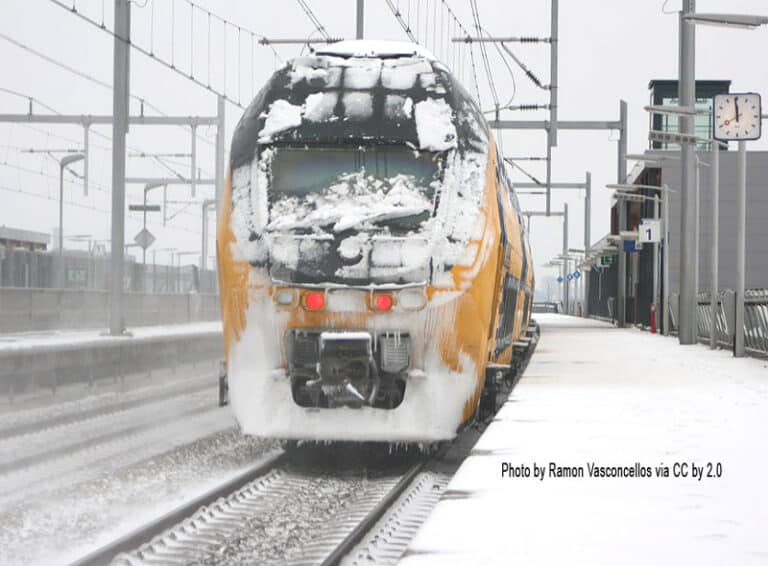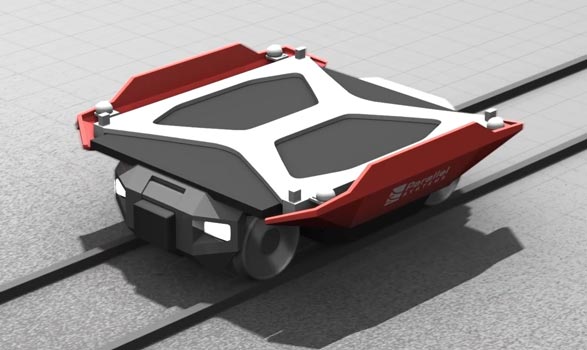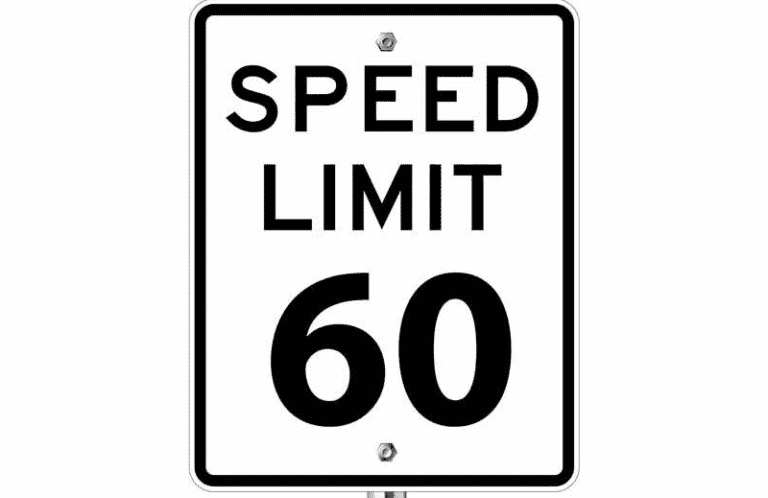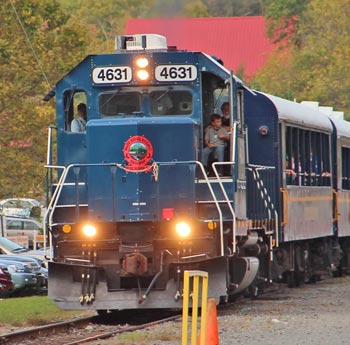Exploring the Connection between Autism and Trains
I don’t want to lump everyone with Autism into the same group. People with autism experience stereotyping on a daily basis. Believing that every person with autism has the same stimulations, behaviors or interests is the same as believing that every “neurotypical” person has the same interests, behaviors and stimulations. Exactly, that’s just wrong.
Everyone is different. This isn’t a one-size-fits-all thing. But, I’ve come to learn that many people with autism love trains. True, many others with Autism don’t care about them at all, we’re simply exploring the established connection for those who experience autism and enjoy trains.
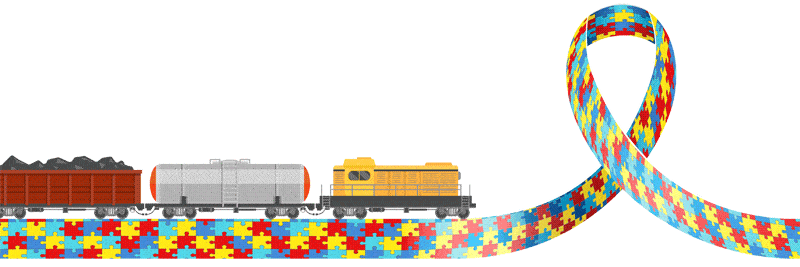
Why Do People With Autism Love Trains?
Honestly, for so many reasons. We’re going to touch on the main ones that we’ve come across in our research and in our experience over the years. I’ve been selling train videos for 20 years and over that time have come to understand that quite a few of our fellow railfans and train enthusiasts are on the autism spectrum.
Many of those are younger boys and men who really enjoy many aspects of trains. We’ve spoken with some and we’ve spoken with parents and brothers and sisters of some. Yet, I feel like this only scratches the real surface of the connection between those with autistic spectrum disorder and trains. If you’d like to correct anything in this article, or expand on it or share a personal experience, please write me at Tim@RailfanDepot.com. So, not necessarily in order of most importance, to science or any particular person, here we go.
#1 For Transportation
Some people on the autistic spectrum may like trains because it’s their preferred method of transport. In many countries of the world and in large cities, trains are easily available transportation.
Trains are highly scheduled and (unless you’re talking Amtrak long distance trains in the United States) they are almost always on time. True, most forms of public transport are on time, but trains really stick to a schedule, and that schedule is posted.
When going on a long-distance excursion, it’s accepted that planes will be late. Buses make a load of stops on the way to your destination which just elongates sand unsettles the journey.
Taxis and other travel services like Uber don’t work like trains. There isn’t a set schedule and you have to wait for an unknown length of time for the car to arrive. Many people, with or without autism, won’t be okay with the wait.
So, when thinking of trains as a mode of transportation, trains present a nice, rigid schedule that appeal to a lot of people on the autism spectrum. They know when the train will pick them up and exactly where this will happen. When using trains, no questions (usually) need to be asked.
So, as a form of transportation, trains represent order. As you may well know, lining things up and other order-related behaviors tend to be early signs of autism. Of course, everyone is different, so this might not be something that your child/friend/etc. exhibits. However, a love of categorization and organization is a common trait in those who are higher on the autistic spectrum than others.
#2 It’s that order, categorization and organization
Well, they are categorized, organized, and lined up already! The engine is always at the front or at a predictable spot in the train, the caboose is always at the back, and the cars are always in the middle. Not to mention that all of this is then placed on a track so it has no choice but to line up.
The world is chaotic for those with ASD. Generally speaking, all they see is socially unpredictable and confusing situations. Much of the time, they think incredibly literally. So, in situations that those without ASD might find easy and simple, those with autism might be totally overwhelmed by the situation.
This isn’t a nice feeling, hence why they try to control as much of their surroundings as possible. And trains are easy to organize, categorize and even control through train videos, models and computer simulations.
How Do They Do This?
Among other methods, lining, categorizing, and organizing things helps them to create structure. Trains are trains. They work like trains. They act like trains. They never deviate from their assigned task or change the way they do their job. Therefore, trains match the above interests perfectly.
#3 For Memorizing Facts
Many people with autism find comfort in memorizing and then knowing and reciting facts. Whether they do this in their mind or talk about it or do this at all depends on who they are. As we’ve mentioned, everyone is different.
Generally speaking, they find that these facts are the place where they feel the safest, happiest, and most comfortable. It allows them to block out parts of the world that they don’t find particularly helpful or causes them sensory harm.
For instance, if a lot is going on in their immediate surroundings, they can turn to the train facts they’ve memorized or the timetable they read yesterday. Or they can think about the noises a train makes. Or perhaps they’ll keep the numbers and names of the trains in mind.
Whatever it may be, trains present a range of data and info to discover, explore, and learn. There are standard facts like schedules and railroad numbers. But there are also more specific bits of data to get your head around like historical facts and technical details — endless information and facts are available with trains, hence the fascination.
#4 Thomas the Tank Engine
While there hasn’t been any rigorous scientific studies showing that those with autism love trains because of Thomas the Tank Engine. However, many parents have suggested it and some research has even suggested it, so why not talk about it?
Many children are given the opportunity to watch or read about Thomas the Tank Engine at some point in their young lives. And, if we consider that some people on the autistic spectrum can be a few years behind those without autism (not all, some), then the TV show will have had an impact.
This is not entirely anecdotal. In 2001 the UK National Autistic Society conducted a survey of 81 parents of children with autism and Asperger syndrome to look at any “special relationship” with Thomas the Tank Engine. The survey found the clear and even narration of the show, the relative accuracy of the models on the show, as opposed to cartoon trains and the still and calm scenery that did not distract all helped their child.
Some children grew out of the Thomas the Tank engine phase, but many of the children in the survey went on to a love of real-world trains. Not all those children with autism will have a love for trains just because they watched Thomas the Tank Engine. Conversely, not all those with autism who love trains will have watched the show at any point. But, it’s still something to think about as there is a potential correlation here.
#5 For Sensory Reasons
Trains have wheels. People on the autism spectrum have been shown to be interested in spinning or rotating things. And these things on trains make a wonderful and predictable noise. When riding the train the vibrations can be directly correlated to the noise. It is a comforting, expected sensory experience. It’s a repeating auditory, visual and tactile sensory experience.
On the train itself, the visuals, the auditory and tactile experience is exactly what is expected. The materials of the car, the soft seats, the hard metal exteriors and the rolling wheels on steel rails are all as expected. It’s what we can see on television, or on a simulation, or on our model trains. Or on Thomas the Tank engine shows. It’s the expected and so it is calming.
#6 For Predictability
This point ties in with our discussion earlier about “order”. It’s slightly different though, so let’s get into it. We talked about the schedules and how the trains, especially urban trains, themselves are on time most of the time. While those on the autism spectrum appreciate this order, it’s also about predictability. Typically, people with autism like to know exactly when things will happen and how they will happen. Train schedules give this to them when it might be otherwise impossible.
As a parent, it’s easy to feel helpless when you can’t answer questions that your child is asking. For instance, if you’re about to go on a long road trip, answering questions such as the following might be tricky:
- When exactly are we going to get there?
- What time are we going to stop?
- How many times are we going to sop?
- What fuel stations will we stop in?
- Where are the toilets?
- What are we going to eat for lunch?
- How are we going to eat lunch in the car?
- and many others.
When you’re on a train, those questions can be easier to answer. This way, your child will be comfortable and won’t feel invalidated, frustrated, and scared by the uncertainty of the journey ahead.
#7 For Exercising Their Mind and Interaction with a Community
Finally, people with autism may like trains because it exercises their mind. It’s a topic that is never-ending, and yet contained. It’s a topic that is fact based. It has a community of enthusiasts who are eager to accept other enthusiasts. There are many way to dive into the topic
After children’s train shows may fall by the wayside, there is a whole train world to explore. There are model trains. There are museums to visit, train excursions to ride. There is an entire hobby built around railfanning – watching trains either at trackside (at a safe distance) or on your television via a DVD or YouTube. And each one of these outlets has an entire community built around it.
What’s the cutting edge with Autism and Trains?
There may be a lot for those involved with ASD to be learned from trains. In fact, therapists are beginning to use trains as part of their play therapy. Though it hasn’t had much scientific research yet. One of the ways therapists use trains is by conducting a collaborative train track building exercise. It develops social skills and allows those with autism to build their abstract thinking.
Books and trains can be used too. How? By using books dedicated to trains and closing it mid-chapter, the person with ASD has to use their knowledge and passion about trains and then inference to figure out what will happen next.
Alongside this, other train-related educational tools have been brought into play. Autism Spectrum Australia built the “Emotion Game”, for example. Here, characters from the much-loved Thomas the Tank Engine show are displayed and the person attempts to match a pre-determined feeling to the facial expressions.
It’s been reported that some parents have found that previously-present communication delays have been resolved thanks to time spent around trains. Whether it’s the increased understanding of metaphorical phrases or advanced referencing capabilities, parents of children with autism have noticed an abundance of positive outcomes from trains.
Ways to Support Those Who Are Connected to Trains
#1 Go On a Rail Adventure
There are plenty of amazing rail adventures around the world for you and the train lover in your life to explore. Of course, the one you choose will depend on where you live (or how much money you’re willing to spend). But regardless, here are a few of our favorites:
Amtrak’s Coast Starlight
This one runs from Seattle to Portland to Los Angeles. It will take you 36 hours to complete the journey in one direction; whoever you’ve treated to this trip is going to love it. People come from all over the world to experience the West Coast adventure on Coast Starlight. After all, who wouldn’t want to be whisked past forests, mountains, and waterfalls?
Cumbres ; Toltec Scenic Railroad
This one is the longest (a total of 64 miles) and highest (10,015 feet!) steam railroad in the whole of the United States of America. Back in the day, it was used exclusively by Colorado’s mining zones but it’s now available to the public. It’ll be like traveling back in time from a parlor, coach, or open-air car.
Alaska Railroad’s Coastal Classic
Here, you will travel from Anchorage to Girdwood to Seward. It takes approximately one and a half hours to travel one way. You’ll have the luxury of a dining cart too which is just amazing!
If you go anywhere from May to September, you’ll be able to spot loads of wildlife and beautiful plants as you journey along the shoreline.
#2 Take Trips to the Train Station
Even though we’ve just talked about amazing railroad adventures, you could simply take a trip to the nearest train station. To tell you the truth, you might get the same kind of reaction from the train aficionado in your life!
Just sitting on the platform, watching the trains come in, stop, and go will be brilliant. Those with autism can then categorize them, point out all the details, and so much more. It will give you an amazing chance to connect with your loved one in a way that they will truly appreciate.
Plus, there are so many other train-related activities going on in the station that those with autism who love trains can have fun with. Whether it’s looking at the boards that display the times of arrival, asking the ticket collector loads of questions or just soaking up the atmosphere of the station, they’re going to have buckets of fun.
However, we know that getting to a train station isn’t always doable. You might not live near one or you simply don’t have the means to get there. If this is the case, then the other options on this list will be better for you and your child/partner/friend.
#3 Watch DVDs
DVDs are a sure-fire way to get some great quality time with someone who is fascinated by trains — if it’s a DVD of their favorite train, you’ll get some brownie points.
Even buying them can be a really fun activity to sit together and do. If your child/friend/family member/partner is interested, have a scroll through our selection. We’ve got over 2,500 shows to choose from.
#4 Take a Virtual Railway Ride
Aside from DVDs, YouTube offers some great virtual railroad rides that will make the train lover in your life feel like they are really there! They can sit and hear the sounds of the trains, the wildlife, and see all the beautiful sites.
The Flåm Railway in Norway
This journey is, unarguably, one of the most beautiful rides in the world. But of course, it’s expensive to get there. Plus, depending on the severity of your child’s/friend’s/partner’s autism, flying or driving for long periods of time may not be plausible.
Thankfully, someone has made a fantastically immersive video of the entire journey that is easy to put on and enjoy.
You’ll see the mountains, waterfalls, ravines, mountains, and farms.
7 Express Line in New York
This one takes you from Queens to Manhattan. You’ll get outside and inside (underground) views which could be quite interesting for the senses (especially if you’re watching it on a big screen).
Just a bit of background info about this one that your friend/child/spouse who loves trains might be interested in — it was recorded on an R62A train. It has been turned back to the 6 now.
Bernina Railway — Switzerland to Italy
With this virtual tour, you’ll start in St Moritz in Switzerland and journey to Tirano in Italy. You’ll pass villages, sparkling water, and so much more. They even take you into the Italian-style carts so everything can be experienced.
The Ferrocarril Central Andino in Peru
This one is a four-part virtual railroad wide! You begin in Chosica and come to a stop in the Andes. Here’s the lowdown of each part:
- One = you’ll go over the large Puente Carrión
- Two = you’ll climb up from Matucana to San Mateo
- Three = you’ll be taken over another bridge and experience the thrill of going through a canyon on a train
- Four = you’ll be traveling through an incredibly high railroad tunnel
#5 Visit the Library
There are plenty of adult books about trains that you can find. However, these won’t be beneficial if your child with autism is very young. If you can relate, you’ll probably be wanting to find some picture books to supplement the train station visits and DVDs.
We’ll give you a few ideas here but there are loads more available.
The Goodnight Train by June Sobel
With beautiful illustrations and rhyming verse, this book works wonderfully to describe and emulate the feeling of being on a train.
Aside from this, it may help get the bedtime routine sorted! It has lots of pictures of toothbrushes etc. that you can use to support healthy habits.
Trains Go by Steve Light
Inside, you’ll find 8 types of trains and the various sounds that they make. The author uses a mixture of letter size, color, fonts, and other design features to ensure you and your child can get the noises just right.
Subway by Christoph Niemann
This one takes you on a journey through the New York City subway network. It won’t appeal to everyone, however, if your little one likes to figure out the maps, they’ll love it.
That’s Not My Train by Fiona Watt
If engaging all the senses is something that you’re looking for in train books, this is the one for you. It has visual and tactile elements that bring the writing and pictures to life. To be engaged is to learn; That’s Not My Train will help you and your child do just that.
#6 Build a Railroad
Tabletop railroad building is an incredibly popular hobby among adults and children alike. It’s true that it’s mainly attractive to males but females have been known to enjoy building them too.
This pastime is extremely in-depth and there’s no way we’d be able to cover it all here! There are plenty of beginner’s guides online that will help the train lover in your life get to grips with it. But to tell you the truth, they might already know about it and are currently looking up ways to get involved!
Having said that, we will give you some insider tips on how your child (along with you) can start:
- Find a tabletop layout that you and your child like. Whether that’s online or from a physical brick and mortar store is up to you.
- Set up an inside space for it to stay out.
- Work with your child, don’t tell them what to do. This mainly applies to the building process.
References
https://www.autismspeaks.org/expert-opinion/what-it-about-autism-and-trains-0
https://www.autisticandunapologetic.com/2020/02/16/why-do-autistic-people-love-trains/
https://www.fatherly.com/health-science/science-kids-train-obsession/
https://eu.usatoday.com/story/travel/destinations/2016/09/22/best-train-rides/90784928/
https://www.lineupthebooks.com/obsessed-9-picture-books-for-kids-who-really-love-trains/
https://www.building-your-model-railroad.com/model-train-layout.html
https://autismsomeassemblyrequired.com/why-do-autistic-people-like-trains/


